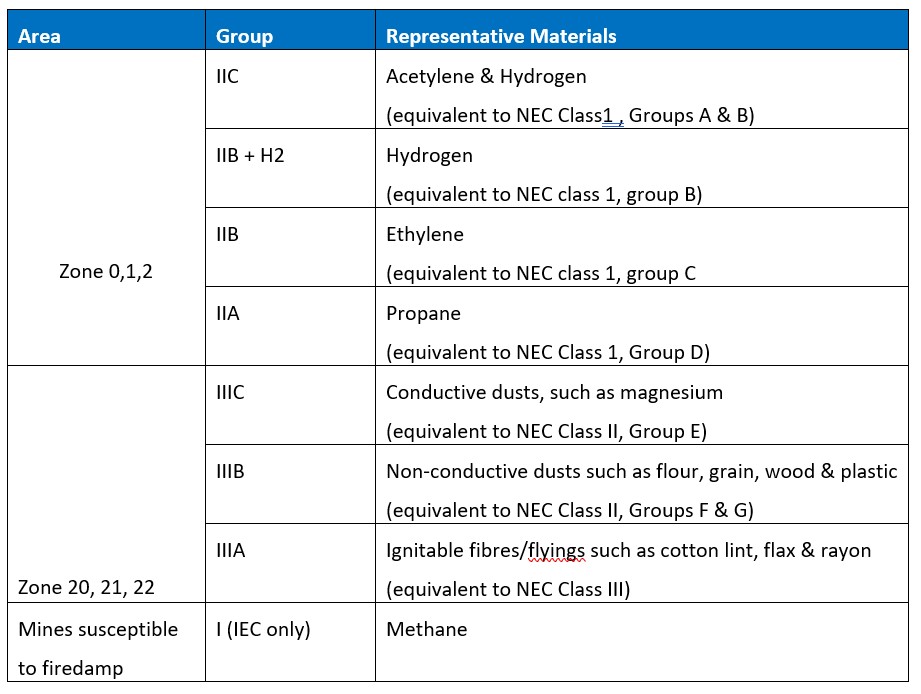Some Known Questions About Roar Solutions.
Some Known Questions About Roar Solutions.
Blog Article
Some Known Questions About Roar Solutions.
Table of Contents6 Easy Facts About Roar Solutions ShownThe 2-Minute Rule for Roar SolutionsNot known Factual Statements About Roar Solutions
In order to protect installments from a prospective explosion a method of evaluating and classifying a potentially harmful location is needed. The function of this is to ensure the proper choice and installment of devices to ultimately protect against an explosion and to make certain security of life.
(https://www.brownbook.net/business/53579326/roar-solutions/)
No equipment ought to be set up where the surface temperature of the devices is above the ignition temperature of the given risk. Below are some usual dust hazardous and their minimum ignition temperature. Coal Dust 380C 225C Polythene 420C (melts) Methyl Cellulose 420C 320C Starch 460C 435C Flour 490C 340C Sugar 490C 460C Grain Dirt 510C 300C Phenolic Resin 530C > 450C Aluminium 590C > 450C PVC 700C > 450C Residue 810C 570C The likelihood of the hazard being present in a concentration high sufficient to create an ignition will certainly differ from place to place.
In order to categorize this danger an installment is separated into locations of threat depending upon the quantity of time the harmful is existing. These areas are described as Areas. For gases and vapours and dirts and fibres there are 3 areas. Zone 0 Area 20 An unsafe environment is highly likely to be present and may be existing for lengthy periods of time (> 1000 hours annually) or perhaps continually Area 1 Zone 21 A hazardous atmosphere is feasible but not likely to be present for long durations of time (> 10 450 C [842 F] A classification of T6 means the minimal ignition temperature is > 85 C [185 F] Hazardous location electrical tools maybe designed for use in higher ambient temperature levels. This would showed on the score plate e.g. EExe II C T3 Ta + 60C( This implies at 60C ambient T3 will certainly not be surpassed) T1 T1, T2, T3, T4, T5, T6 T2 T2, T3, T4, T5, T6 T3 T3, T4, T5, T6 T4 T4, T5, T6 T5 T5, T6 T6 T6 A T Course score of T1 suggests the maximum surface temperature level produced by the tool at 40 C is 450 C. Thinking the associated T Course and Temperature ranking for the tools are proper for the area, you can constantly make use of a tool with an extra stringent Department score than needed for the area. There isn't a clear solution to this question. It actually does depend upon the sort of devices and what fixings need to be performed. Equipment with details test procedures that can not be done in the area in order to achieve/maintain 3rd party score. Have to come back to the manufacturing facility if it is before the tools's service. Area Fixing By Authorised Worker: Complicated screening might not be needed nonetheless certain treatments may require to be complied with in order for the devices to maintain its 3rd party ranking. Authorized personnel have to be utilized to perform the job correctly Repair must be a like for like replacement. New part must be considered as a straight replacement needing no special testing of the equipment after the repair service is complete. Each item of equipment with an unsafe rating should be reviewed independently. These are detailed at a high degree listed below, however for even more thorough information, please refer straight to the guidelines.
Some Ideas on Roar Solutions You Need To Know
The devices register is a detailed database of devices documents that consists of a minimum collection of fields to recognize each thing's location, technical parameters, Ex lover category, age, and ecological information. The ratio of Detailed to Shut evaluations will certainly be identified by the Devices Danger, which is evaluated based on ignition threat (the likelihood of a resource of ignition versus the possibility of a flammable atmosphere )and the hazardous location classification
( Zone 0Area 1, or 2). Executing a durable Risk-Based Examination( RBI )method is important for making certain conformity and safety in taking care of Electric Devices in Hazardous Areas( EEHA).
Getting The Roar Solutions To Work

In terms of explosive threat, a hazardous location is an atmosphere in which an eruptive atmosphere exists (or might be expected to be existing) in amounts that require unique safety measures for the building, setup and use of tools. high voltage courses. In this post we explore the obstacles faced in the office, the danger control actions, and the required expertises to function safely
These materials can, in particular conditions, form explosive atmospheres and these can have major and unfortunate consequences. Many of us are familiar with the fire triangle eliminate any one of the 3 elements and the fire can not take place, but what does this mean in the context of unsafe areas?
In a lot of instances, we can do little about the degrees of oxygen airborne, however we can have substantial impact on resources of ignition, for instance electric devices. Hazardous locations are recorded on the harmful area category drawing and are recognized on-site by the triangular "EX-SPOUSE" sign. Below, amongst various other essential info, zones are split into 3 types depending on the danger, the possibility and period that an explosive ambience will exist; Area 0 or 20 is deemed one of the most dangerous and Zone 2 or 22 is considered the least.
Report this page